Related Research Articles
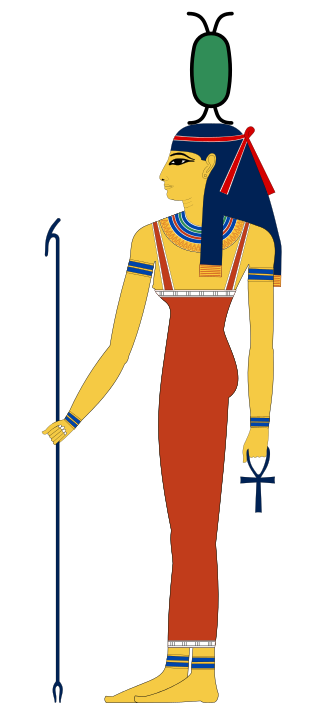
Neith was an ancient Egyptian deity, possibly of Libyan origin. She was connected with warfare, as indicated by her emblem of two crossed bows, and with motherhood, as shown by texts that call her the mother of particular deities, such as the sun god Ra and the crocodile god Sobek. As a mother goddess, she was sometimes said to be the creator of the world. She also had a presence in funerary religion, and this aspect of her character grew over time: she became one of the four goddesses who protected the coffin and internal organs of the deceased.

Sir William Matthew Flinders Petrie, commonly known as simply Sir Flinders Petrie, was a British Egyptologist and a pioneer of systematic methodology in archaeology and the preservation of artefacts. He held the first chair of Egyptology in the United Kingdom, and excavated many of the most important archaeological sites in Egypt in conjunction with his wife, Hilda Urlin. Some consider his most famous discovery to be that of the Merneptah Stele, an opinion with which Petrie himself concurred. Undoubtedly at least as important is his 1905 discovery and correct identification of the character of the Proto-Sinaitic script, the ancestor of almost all alphabetic scripts.
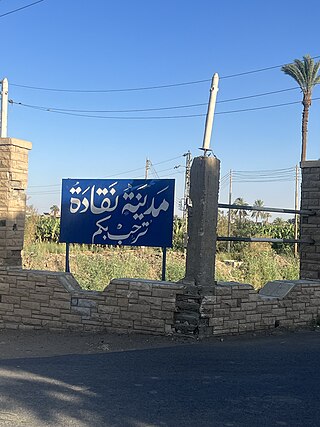
Naqada is a town on the west bank of the Nile in Qena Governorate, Egypt, situated ca. 20 km north of Luxor. It includes the villages of Tukh, Khatara, Danfiq, and Zawayda. According to the 1960 census, it is one of the most uninhabited areas and had only 3,000 inhabitants, mostly of Christian faith who preserved elements of the Coptic language up until the 1930s.
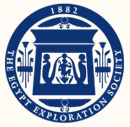
The Egypt Exploration Society (EES) is a British non-profit organization. The society was founded in 1882 by Amelia Edwards and Reginald Stuart Poole in order to examine and excavate in the areas of Egypt and Sudan. The intent was to study and analyze the results of the excavations and publish the information for the scholarly world.

Nekhen, also known as Hierakonpolis was the religious and political capital of Upper Egypt at the end of prehistoric Egypt and probably also during the Early Dynastic Period.

Iry-Hor was a predynastic pharaoh of Upper Egypt during the 32nd century BC. Excavations at Abydos in the 1980s and 1990s and the discovery in 2012 of an inscription of Iry-Hor in Sinai confirmed his existence. Iry-Hor is the earliest ruler of Egypt known by name and is sometimes cited as the earliest-living historical person known by name.

Anedjib, more correctly Adjib and also known as Hor-Anedjib, Hor-Adjib and Enezib, is the Horus name of an early Egyptian king who ruled during the 1st Dynasty.
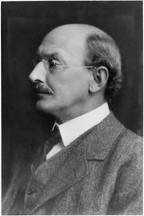
Francis Llewellyn Griffith was an eminent British Egyptologist of the late 19th and early 20th centuries.

Ka, also (alternatively) Sekhen, was a Predynastic pharaoh of Upper Egypt belonging to Dynasty 0. He probably reigned during the first half of the 32nd century BC. The length of his reign is unknown.

John Garstang was a British archaeologist of the Ancient Near East, especially Egypt, Sudan, Anatolia and the southern Levant. He was the younger brother of Professor Walter Garstang, FRS, a marine biologist and zoologist. Garstang is considered a pioneer in the development of scientific practices in archaeology as he kept detailed records of his excavations with extensive photographic records, which was a comparatively rare practice in early 20th-century archaeology.

Gertrude Caton Thompson, was an English archaeologist at a time when participation by women in the discipline was uncommon. Much of her archaeological work was conducted in Egypt. However, she also worked on expeditions in Zimbabwe, Malta, and South Arabia. Her notable contributions to the field of archaeology include creating a technique for excavating archaeological sites and information on Paleolithic to Predynastic civilizations in Zimbabwe and Egypt. Caton Thompson held many official positions in organizations such as the Prehistoric Society and the Royal Anthropological Institute.
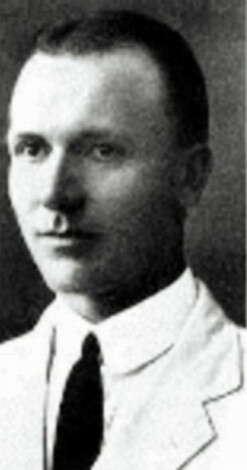
Edward Russell Ayrton was an English Egyptologist and archaeologist.

Frederick Jones Bliss was an American archaeologist.

Tell el-Hesi, or Tell el-Hesy, is a 25-acre archaeological site in Israel. It was the first major site excavated in Palestine, first by Flinders Petrie in 1890 and later by Frederick Jones Bliss in 1891 and 1892, both sponsored by the Palestine Exploration Fund (PEF). Petrie's excavations were one of the first to systematically use stratigraphy and seriation to produce a chronology of the site. Tell el-Hesi is located southwest of the modern Israeli city of Qiryat Gat.
Sewadjenre Nebiryraw was an ancient Egyptian pharaoh of the Theban-based 16th Dynasty, during the Second Intermediate Period.

Arthur Cruttenden Mace was a Tasmanian-born English archaeologist and Egyptologist. He is best known for his work for the New York Metropolitan Museum, and as a part of Howard Carter's team during the excavation of Tutankhamun's tomb.

Repyt, or Repit, was an ancient Egyptian goddess. Typically, she was portrayed as one of the lioness goddesses of Egypt. Her husband was Min.

Hilda Mary Isabel, Lady Petrie, was an Irish-born British Egyptologist and wife of Sir Flinders Petrie, the father of scientific archaeology. Having studied geology, she was hired by Flinders Petrie at age 25 as an artist, which led to their marriage and a working partnership that endured for their lifetimes.

Ancient Egyptian pottery includes all objects of fired clay from ancient Egypt. First and foremost, ceramics served as household wares for the storage, preparation, transport, and consumption of food, drink, and raw materials. Such items include beer and wine mugs and water jugs, but also bread moulds, fire pits, lamps, and stands for holding round vessels, which were all commonly used in the Egyptian household. Other types of pottery served ritual purposes. Ceramics are often found as grave goods.
Tell el-Far'ah (South) is an archaeological site on the bank of HaBesor Stream in the northern Negev region, Israel. Not to be confused with the site Tell el-Far'ah (North). It is located between the modern settlements of Ein HaBesor and Urim, some 12 kilometres (7.5 mi) from the modern city of Ofakim and 20 kilometres (12 mi) from Gaza.
References
- 1 2 3 William Matthew Flinders Petrie, Arthur Cruttenden Mace (1901). Diospolis Parva: The Cemeteries of Abadiyeh and Hu, 1898-9. unknown library. Sold at the offices of the Egypt exploration fund [etc.]
- ↑ article HIW (PREDYNASTIC) written by Thomas Hikade-UCLA Encyclopedia of Egyptology Department of Near Eastern Languages and Cultures, UC Los Angeles(with 18 referenced sources)(12-23-2010 retrieved 21:35GMT 30.9.11)UC Los Angeles
- ↑ Museum of Classical Archaeology, Memorial Tower Building, University of Natal (Durban) Archived May 18, 2007, at the Wayback Machine retrieved approx' 17;49 30.9.11